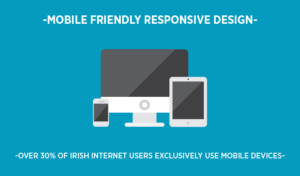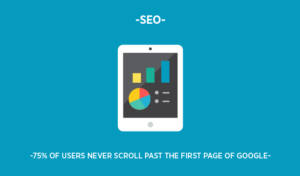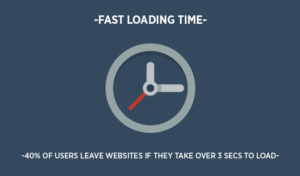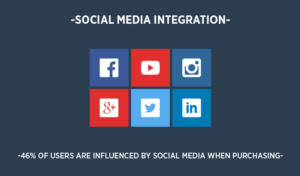There is more to creating a great website than simply making it look good. The best websites in the world share similar traits that we can all learn from and apply to our own work.
Implementing these changes will improve the usability of your site, and provide a better service for your users.
1) User-friendly design
User-friendly design is all about predicting how users will interact with your site. Unfortunately it’s not an exact art, and might require some changes later as you learn more from users and their experiences with the site. That kind of information can be obtained from studying data from Google Analytics.

Navigation
The layout of your user interface (UI) is the backbone of your site. Users need to be able to easily find whatever information they’re looking for. That’s easy enough if you have a portfolio website with only a few pages on your site, but what if you have a complex eCommerce site with thousands of products, multiple categories and more?
Mobile-friendly
With mobile devices becoming increasingly popular, you should be focusing on mobile-friendly designs for all your sites (not just for better navigation, but for SEO-purposes too LINK).
Take into consideration that mobile users mainly use their thumbs to navigate their phones. Clickable elements should be larger and be surrounded by enough space in order not to click on the wrong link or object.
2) Designing for performance
Break it down
Behind the scenes, websites consist of many scripts and CSS styling files. The more there are, the slower your website loads. But it’s not necessary for all these files to load at once when a page is viewed. A CSS style can consist of hundreds or thousands of lines, why not then create a base stylesheet for the main components of your website, accompanied by other CSS files that only trigger when viewing specific pages?
This breaks the work into smaller parts, and makes your website work less – all improving your overall load times.
Simplify Code
Review your JavaScript and CSS files every few months, and see where you can clear up code. You might have learnt a simpler technique to execute certain functions, or maybe some functions are no longer necessary. Duplicated code might also exist.
Media
Video and images are great visual assets that draw the eyes of users, but they might also be slowing down your site significantly – to the point that users abandon your site and go to competing sites.
3) Be Visual
Images
Using high-quality images is obviously important.Yes it’s tempting to purchase stock images to quickly use on your site. The only problem is that these images aren’t truly unique, as anybody has access to them. If you have the budget, we recommend hiring a photographer to create unique assets that stand out from the rest.
Consistency
You want to create a consistent experience for your users – general formatting, typography, images or your use of icons.Users feel more comfortable in a familiar experience.
4) SEO

SEO has a huge baring on whether your eCommerce website will be found through search engines or not. According to award winning online blogger Hubspot up to “75% of users never scroll past the first page of search results”. This means that if your website is not one the first page of search engines like Google, then you will not get the amount of traffic that someone on the first page will get. SEO optimisation is a long process and to expect to appear on page one of Google overnight is not realistic. Climbing the rankings is a hard process that involves an SEO expert fine tuning numerous aspects of your website including the content, keywords, speed, index system, etc.
5. Social Media Integration
Social media has a huge baring in persuading your audience to purchase a product from your eCommerce website. “Approximately 46% of online users count on social media when making a purchase decision”. For example having a Facebook like counter next to a product with a significant amount of likes tells the viewer that the product is trustworthy. Having a product that is visibly liked by others can be the difference between selling and not selling a product. Social media integration also allows the user to share the product or service they purchased on social media, encouraging their online friends to view the product.








